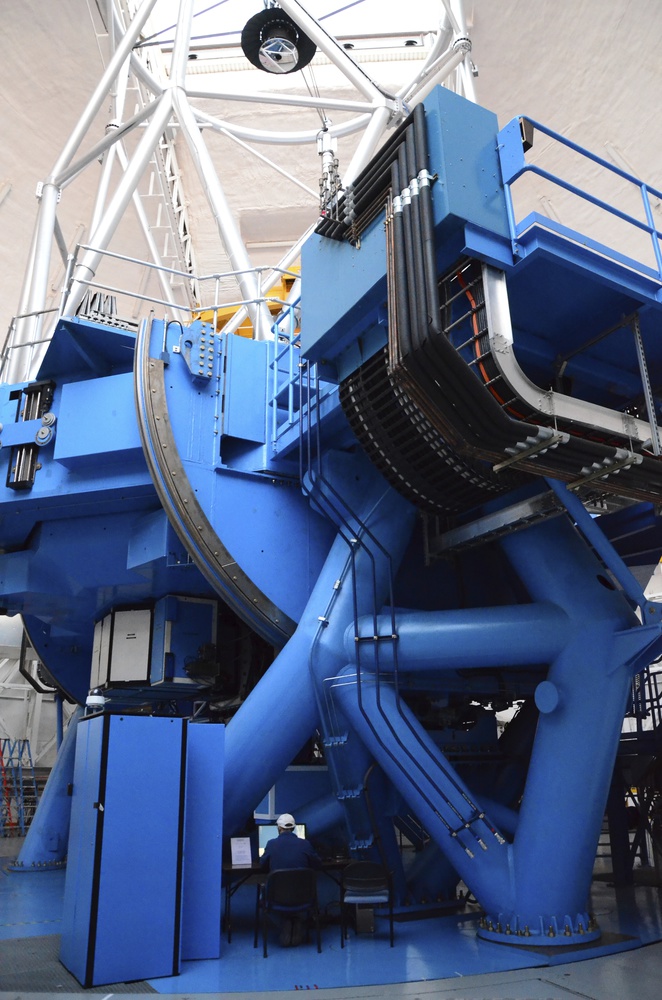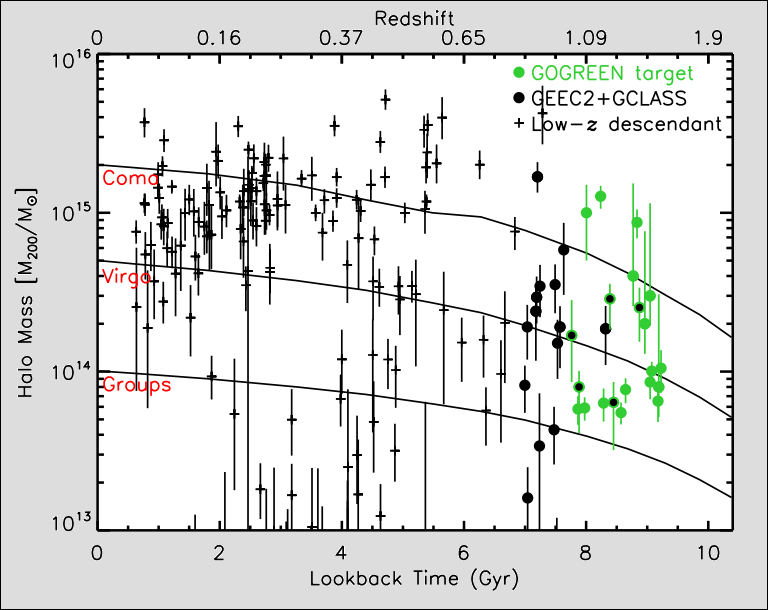Learning by Observation: Galaxy Clusters

Galaxy clusters are vital in furthering our understanding and testing our knowledge of general cosmology, galaxy formation and evolution, plasma physics and even for studying the nature of dark matter. Clusters of galaxies are among the most massive structures in the Universe, with up to 1000 trillion times the mass of the Sun in stars, gas and dark matter. Their scientific value is great, as their immense gravitational potentials allow them to act as cosmic calorimeters; all energy inputs and outputs leave an observable record of how galaxy formation has occurred over the history of the Universe.
Hosting the most massive galaxies and some of the first luminous objects to form, clusters make ideal laboratories to observe how galaxy evolution is perturbed by rare and fascinating interactions with the environment they’re associated in – including hydrodynamic stripping of gas, tidal stripping of matter, and high-speed gravitational encounters. Much of what we have learned about galaxy evolution is owed to years of research on these systems.
Gemini: A Compelling Choice

The Gemini Multi-Object Spectrographs (GMOS), equipped on both telescopes (Gemini South and North), offer the possibility of efficiently obtaining spectra for hundreds of objects simultaneously. The spectrographs are capable of imaging over a 5.5 square arcminute field of view and observes the sky through carbon fibre masks.
The “nod-and-shuffle” mode available on the spectrographs allows microslits that are three times smaller than normal slits, and thus increasing the number of slits that can be placed within the field of view. This mode is excellent for subtracting background electromagnetic sky emissions at red wavelengths, necessary for obtaining data on the reddest and faintest of galaxies. Together with the upgraded Hamamatsu detectors, the 8-meter aperture telescopes have the most efficient and red-sensitive spectrographs of the world – making them ideal for surveying the densely packed, high redshift clusters that GOGREEN is after.
GOGREEN: Goals and Interests

GOGREEN is the ultimate distant-cluster legacy survey. The targets are 21 high redshift galaxy clusters, chosen to span a range of masses. These clusters include progenitors of the nearby Coma and Virgo clusters, as well as some massive groups (the full updated list of targets may be seen in the Cluster Targets).
At z > 1, when the gas accretion rates, relative (gaseous) mass and star formation rates of galaxies were much higher than they are today, the interactions between galaxies and their environments are naturally expected to be very different. However, the properties of galaxies in z > 1 clusters still remain almost completely unknown. Current standing theories and models of galaxy formation and evolution in said clusters are poorly constrained and have not yet been tested. By building upon the work done by the GCLASS and GEEC2 surveys (also with Gemini), GOGREEN’s goal is to become the definitive redshift survey of galaxies in massive cluster “haloes” with spectroscopy for over 1000 cluster galaxies, making it a pioneering and exemplary survey for many years to come.
